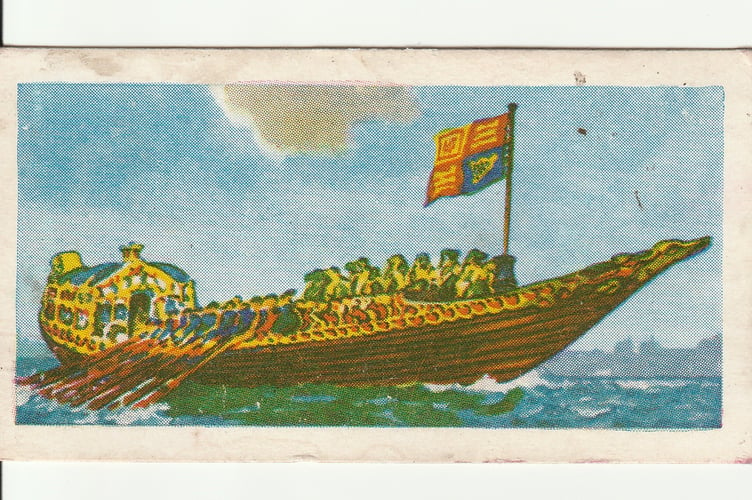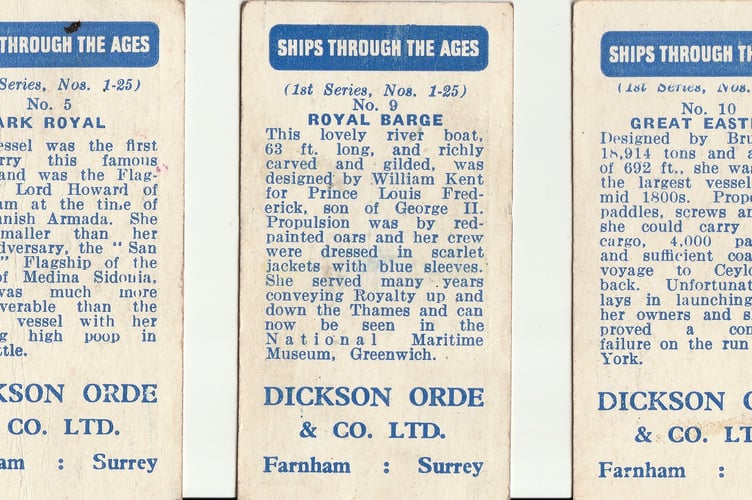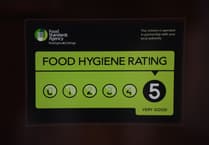This week Peeps is venturing back to a time – not too long ago – when it was considered perfectly acceptable for sweets designed to look like cigarettes to be sold to children.
If you grew up in the 1970s, or earlier, you probably remember pretending to draw on a sweet cigarette, which you held between your fingers with an assumed air of adult elegance or let dangle insolently from the corner of your mouth in an equally precocious manner.
These fake “fags” were thin white sticks with a touch of red at the tip – meant to represent the lighted end. But, of course, they were nothing like the real thing, having a tendency to get sticky at the end you sucked and tasting of nothing but sugar.
Very often the packs contained a slim card with a picture of a footballer and details about his club. Various other subjects, usually considered to be of interest more to boys than girls, were also featured on the cards that you could collect to show off or trade with your friends.

One of the confectionary companies that made these packets of sweet cigarettes was Dickson Orde of Farnham.
It is understood that they were a small manufacturer founded in 1953 and were taken over in 1980 by Hull-based confectioner Needlers, who in turn were bought by Hillsdown Holdings and later NORA SA, the largest food group in Norway.
Apart from those facts, Peeps has little information on the firm. Online sources suggest the company only issued one set of football cards, which was simply titled “Footballers”. Released with “Festoon” confectionery back in 1960, it featured 50 colour head and shoulders portraits and posed “action” pictures.
But we do know they also produced a series called “Sports of the Countries”, showing various national sports, and we believe they must have issued sets on other topics too as we have photographs of three cards bearing their name from a series called “Ships Through The Ages” (pictured below).
Card number 5 in that series featured the first Ark Royal, which was the flagship of Lord Howard at the time of the Spanish Armada, described as much smaller but more manoeuvrable than her main adversary, the San Martin flagship of the Duke of Medina Sidonia.

Number 9 focused on the Royal Barge – a 63ft long, richly carved and gilded riverboat designed by William Kent for Prince Louis Frederick, son of George II. Crewed by oarsmen dressed in scarlet jackets with blue sleeves, it served for many years conveying royalty up and down the Thames.
Number 10 described the Great Eastern, which was designed by Isambard Kingdom Brunel and was by far the largest vessel of the mid-1800s. At 18,914 tons and with a length of 692 feet, she could carry a huge cargo, 4,000 passengers and enough coal for a voyage to Sri Lanka and back.
The idea for these “cigarette” cards was borrowed from real cigarette packets, which from the 1880s had included pictures of sports stars, beautiful women and soldiers.
Manufacturers had started using cards as “stiffeners” to protect the contents from being crushed or bent when cigarettes were wrapped in paper packets, but they soon realised their advertising potential and sets of cards to collect were produced to encourage repeat purchases.
With background information on the pictured subjects printed on the back, the cards served to educate as well as to excite and amuse.
By the 1930s sets issued covered almost all aspects of nature, transport, sport and famous figures – and in later sweet cigarette packs, children could find cards with their favourite TV characters such as Dr Who.
Do you remember Dickson Orde or their sweet products? Did you work for them or collect their cigarette cards? Contact [email protected] with any information.



